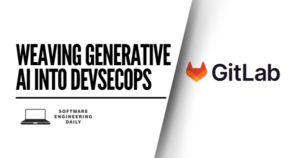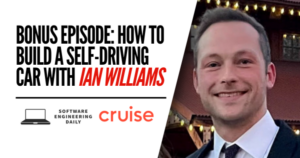Software Chasms with Martin Casado
Podcast: Play in new window | Download
Subscribe: RSS

 Infrastructure software can be a great business.
Infrastructure software can be a great business.
An infrastructure software company sells core technology to a large enterprise such as a bank or insurance company. This software has near zero marginal cost and generates a large annuity for the infrastructure software company. Once a bank has purchased your infrastructure software, the bank is likely to renew every year and never remove the software.
Selling infrastructure software is like selling concrete or steel, except the software is cheaper to produce, easier to distribute, and generates an annuity rather than being a one-time sale.
The fundamental economics of enterprise infrastructure software are extremely appealing, and every year more businesses enter the space–but few businesses ever leave. If you are starting an infrastructure software company, you can expect a complex battle for market share. There is no easy trick to get it into the hands of your target customer.
Martin Casado studied computer science at Stanford before founding Nicira, a company that pioneered software-defined networking and virtualization technology. In 2012, Nicira sold to VMware for $1.26 billion. Martin now works as a general partner at Andreessen Horowitz.
Martin writes about the modern strategies of building a successful infrastructure software company. He describes two methods of selling into an enterprise: bottoms-up and top-down.
In a bottoms-up model, engineers within an enterprise start using your product to solve a well-defined problem, such as API management. As more and more employees within the organization start to use your product, you can begin to engage the enterprise about becoming a paying customer for your product. Since the enterprise is already using your product, the sales conversation is much easier.
In the top-down model, you engage the CIO, CEO, or CTO directly and try to convince them that your product is worth paying for. When the senior leadership of a bank buys into your product idea, you can count on that senior leadership to convince their developers to use your product within the bank.
It is a rare occurrence that your infrastructure software company will be able to fit cleanly into either of these models–bottoms-up or top-down. More often, there will be some bottoms-up usage, and some top-down buy-in for your product. But you will have to evangelize the product on all fronts. You will have to convince both the engineers and the senior leadership.
Your product probably won’t speak for itself. You will have to develop expertise in sales, marketing, and consultancy. And in many cases, you might end up in an unending chasm.
The unending chasm describes a mode in which an infrastructure company must function as both a product company and a consultancy. Your consultancy is necessary to integrate your product into the enterprise, and ensure that your software actually gets used. But it reduces the appealing economics of a pure software company.
The unending chasm does not prevent you from being successful. Companies who have had very successful IPOs remain in the unending chasm. But it’s useful to know whether you are heading for an unending chasm–or if you are already in one.
Martin Casado joins the show today for a discussion of product development, software engineering, and go-to-market strategy.
To find all 900 of our episodes, including past episodes with a16z partners, check out the Software Engineering Daily app in the iOS and Android app stores. Whether or not you are a software engineer, we have lots of content about technology, business, and culture. In our app, you can also become a paid subscriber and get ad-free episodes–and you can have conversations with other members of the Software Engineering Daily community.
Transcript
Transcript provided by We Edit Podcasts. Software Engineering Daily listeners can go to weeditpodcasts.com/sed to get 20% off the first two months of audio editing and transcription services. Thanks to We Edit Podcasts for partnering with SE Daily. Please click here to view this show’s transcript.
Sponsors
Over 8000 open source projects and engineering teams at companies like Twitter, Docker and HashiCorp rely on FOSSA daily to manage their open source licenses and dependencies. Get a free scan by going to go.fossa.com/sedaily.
MongoDB is the most popular nonrelational database. MongoDB Stitch is a serverless platform from MongoDB, that allows you to build rich interactions with your database. To try it out yourself today, experiment with $10 in free credit by going to mongodb.com/sedaily.
App Academy’s Engineering Interview Prep course will help you build your skills and build the confidence you need to do the sorting algorithms, the binary tree questions–all the material that you have forgotten since your last interview. Go to softwareengineeringdaily.com/interviewprep to get $100 off the online course, and put yourself in a position to get a job that you are more satisfied with, and a higher salary.
Mesosphere’s Kubernetes-as-a-service provides single-click Kubernetes deployment with simple management, security features, and high availability to make your Kubernetes deployment easy. To find out how Mesosphere Kubernetes-as-a-Service can help you easily deploy Kubernetes, check out softwareengineeringdaily.com/mesosphere today.























